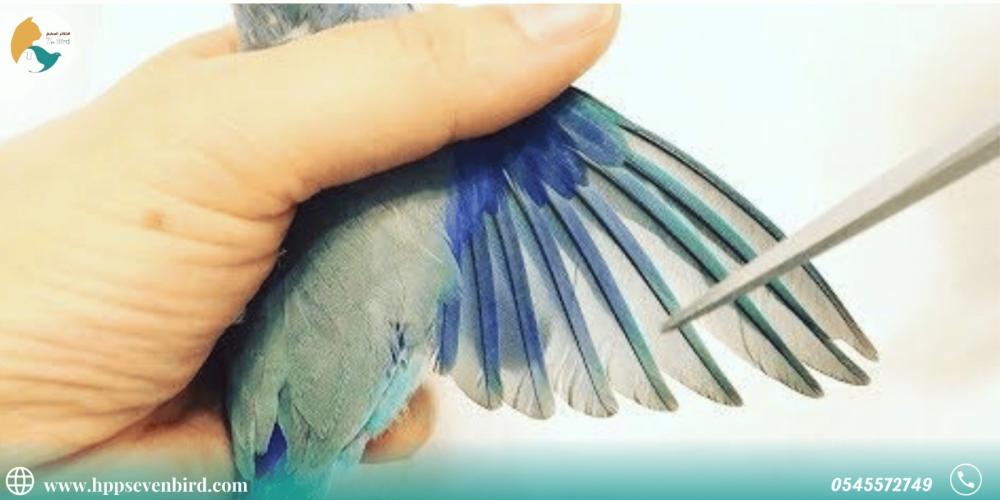Have you ever thought about clipping your pet bird's wings? This common practice among bird owners raises many questions and concerns: why is it done, and how to do it safely and correctly.
?What is wing clipping, and why is it done
Wing clipping is a procedure in which the primary flight feathers (primary flight feathers) on a bird's wings are trimmed. The goal isn't to completely prevent the bird from flying, but rather to reduce its ability to soar and soar long distances. This allows it to glide safely to the ground instead of freefalling.
Main reasons for wing clipping:
Safety and security: Clipping wings prevents birds from flying and colliding with dangerous objects in the home, such as glass windows, ceiling fans, hot stoves, or sharp objects. It also reduces the risk of the bird escaping.
Healthcare: Examining a bird or administering medication is much easier when its movement is restricted.
?Is clipping wings painful for a bird
No, clipping wings is not painful if done correctly. It's similar to clipping your nails or hair. Feathers are dead tissue that contains no nerves or blood vessels in the part being clipped (the outer part of the feather).
However, there is an important exception: blood feathers. These are new feathers that are still growing and have a thick sheath containing an active blood supply. Cutting blood feathers can cause severe pain and profuse bleeding. Therefore, it is essential to know how to identify blood feathers and avoid cutting them altogether.
?How is wing clipping performed safely
To ensure your bird's safety and avoid any harm, it is highly recommended that this procedure be performed by an avian veterinarian or an experienced bird breeder. If you decide to do it yourself, here are the basic steps:
Needed Tools:
Sharp, clean scissors: regular nail clippers or feather clippers.
Stimulant (optional but recommended): such as cornstarch, styptic powder, or even a dry bar of soap, to use in case of accidental bleeding.
A towel: To gently and securely hold the bird.
Stable the bird:
Ask someone else to gently secure the bird in a towel to prevent movement and reduce stress.
Make sure not to apply pressure to the bird's chest, as this can impede breathing.
Identifying Target Feathers:
Gently spread the bird's wing. You'll notice two types of feathers: the small feathers that cover the wing, and the long, stiff primary flight feathers at the end of the wing.
Cut 5 to 7 primary flight feathers from the tip of the wing. This number can vary depending on the bird's size and flight ability. The goal is to allow it to glide safely.
Avoid clipping blood feathers: The base of a newly developing feather will be dark or reddish due to the presence of blood. Never clip these feathers! Wait until they are completely dry and hard before clipping them.
Clip the wings: To ensure your bird's balance, clip the feathers to the same number and length on both wings. Clipping only one wing will cause the bird to spin in circles when attempting to fly and could cause injury.
Clipping Carefully:
Hold the feather you are clipping and clip it straight across or at a slight angle away from the bird's body.
Leave about 1-2 cm of the base of the feather intact.
After Clipping:
Observe the bird for a few minutes to ensure there is no bleeding.
If bleeding occurs from a clipped feather (blood feather), apply pressure with a styptic. If the bleeding does not stop, consult a veterinarian immediately.
:Important tips for bird owners
Not a permanent solution: Clipped feathers will grow back after the moulting cycle, a natural process that typically occurs once or twice a year. You will need to repeat the clipping process regularly.
Young birds first: It is best to allow young birds (chicks) to learn to fly naturally first to strengthen their chest muscles and develop landing skills, then clip their wings later if necessary.
Compensating for flight loss: If your bird has clipped wings, be sure to provide it with a rich and stimulating environment. Dedicate time to playing with it outside the cage, and provide it with toys and perches for climbing and physical activity.
So, we've dedicated this to you from seventh bird:
Seven Bird Colorful Bird Cage Bell Toy
Seven Bird Cage and Rodent Ladder
Seven Bird Wooden Bird Stand with 2 Stainless Cups
Consult your veterinarian: If you are unsure how to clip your bird's wings, or if you have any health concerns, do not hesitate to consult an avian veterinarian.
Clipping a bird's wings is a personal decision for each bird owner, but it is a procedure that can significantly contribute to your bird's safety and reduce potential risks. With proper application and care, you can ensure a safe and happy life for your pet bird.
Caring for birds' health after wing clipping focuses on providing a safe and stimulating environment, a balanced diet, and plenty of interaction to compensate for the inability to fly, while monitoring for any signs of health problems that require veterinary intervention.
So, we've dedicated this to you from seventh bird:
Seven Bird Lavender Feather Moisturizing and Cleaning Spray
Royal Zoo Baby Bird Food Hand Feeding 500ml

